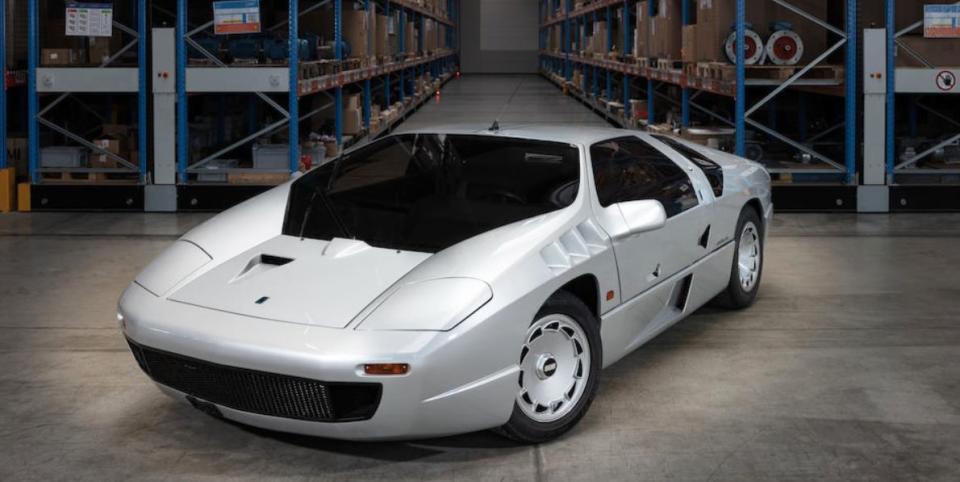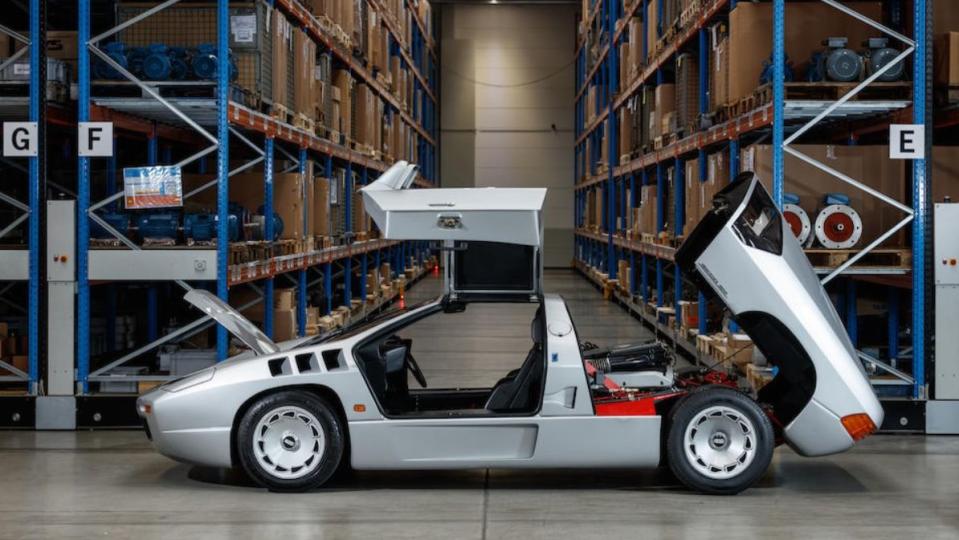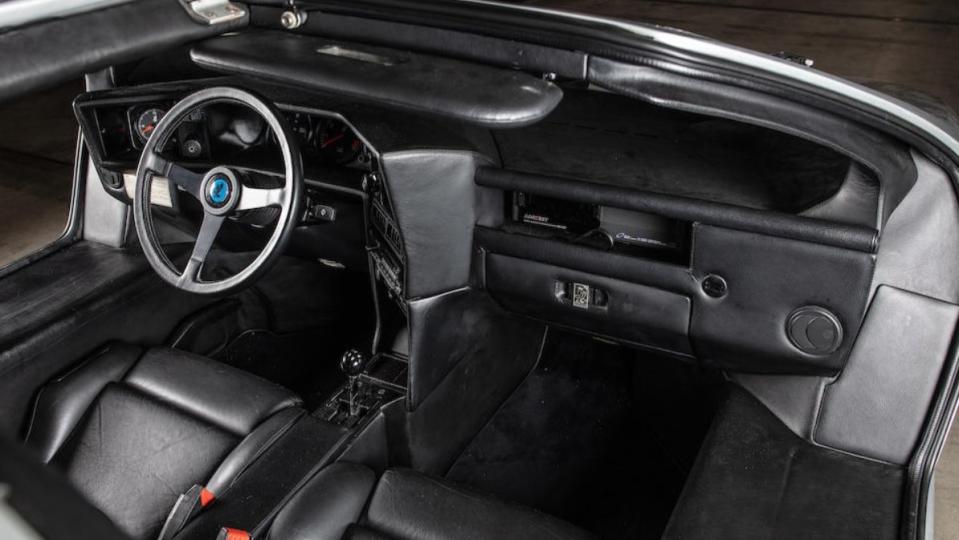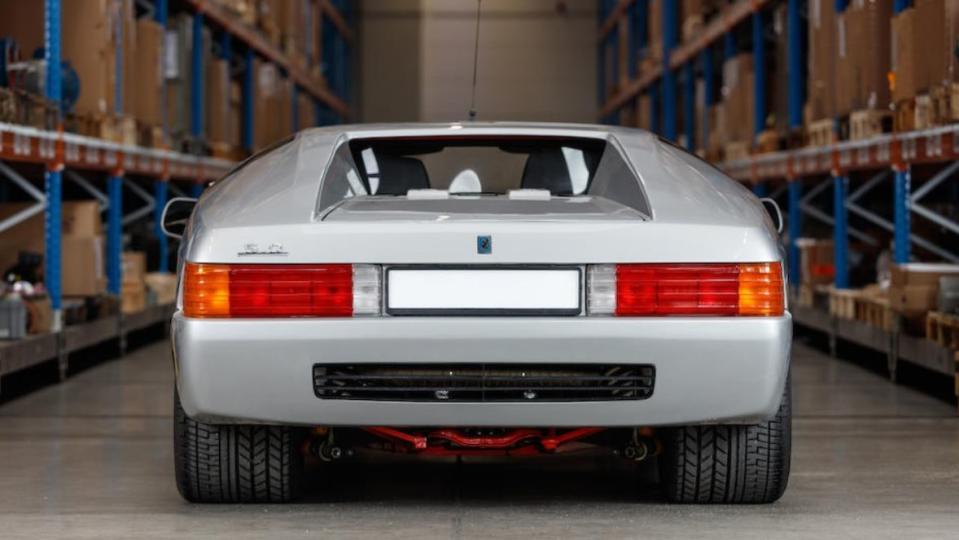1991 Isdera Imperator 108i Heads to Auction

The decade of the 1980s produced no shortage of supercars, from well-known and fairly high-volume models by Italian automakers to more obscure efforts, drawing equally on parts bin items and cash from a booming economy. The lucky ones arrived on sale before the 1987 stock market crash and saw plenty of sales, while others arrived right after the crash to a different landscape and languished on shelves.
The Isdera Imperator is perhaps in both categories, being a very low-volume effort spanning almost ten years, but also arriving much earlier than many other hopefuls. In a few days one of these rarely-seen spaceships will go up for auction in Monaco, when Bonhams offers a 1991 example of the Imperator at its Les Grandes Marques à Monaco sale.
The Isdera Imperator was the brainchild of Porsche design engineer Eberhard Schulz, who sketched it out in his spare time, and is unusual for having first received an official factory concept before being spun off into an independent effort. That concept was the Mercedes-Benz CW311 concept car shown in 1978, but a warm reception and publicity at the time did not lead to any production efforts, as Mercedes-Benz had other priorities. Still, Schultz was able to take the effort and the design and start his own company with the goal of producing the car, launching the company in 1981.

The exterior design had changed only minimally from the CW311 concept car to the delivered model, which was also a minor miracle of the time. And thankfulwly, Schulz had the Mercedes-Benz parts bin to rely on for the effort, including a 5.0-liter Mercedes-Benz M117 V8 engine paired with a five-speed ZF manual gearbox. Combining with a slippery body, gullwing doors and a low-set cabin, the Imperator had a 157-mph top speed, and could spring from 0 to 62 mph in 5.1 seconds. So its performance was certainly athletic for the time, but not quite industry-leading or record-smashing in 1984 or the early 1990s for that matter as other Mercedes cars of the era could also achieve these figures by the early 1990s, namely the SL-Class or the W140 S-Class sedan.
For comparison, the Ferrari Testarossa that debuted the same year could make the sprint to 62 mph in about 5.8 seconds and had a top speed of around 180 mph, while weighing a full thousand pounds more than the Imperator. So the Imperator was in the same general ballpark when it came to straight-line performance with four fewer cylinders, but was prioritized differently in other aspects to make this happen.
The body itself was fiberglass over a steel tube spaceframe, sitting on a coil-sprung independent suspension with a double wishbone setup in the front and transverse links out back. While the exterior was futuristic and well balanced for the time, the interior betrayed just how low-volume the Imperator really was, with plenty of square-cut shapes covered in leather. A 1991 update to the exterior design softened the car's lines a bit, and also brought back pop-up headlights, which were present on the concept but not the production version until that point. It also does not feature the very conspicuous periscope that the earlier cars had instead of a rear-view mirror.

"At the same time the front grille was redesigned, and the front indicators moved to the wing extremities," Bonhams says regarding the Series II cars. "Published figures vary with regard to how many of these 'Series 2' cars were made, ranging from 13 to 17."
The example that Bonhams will offer later this week was one of the later cars built, and was originally supplied to Japan in a left-hand drive layout. Little is known about its early history, prior to 2016 when it was brought to the U.K. and given a partial restoration in Germany to the tune of €130,000. The odometer in the car displays 000893, presumably in kilometers, but the auction house doesn't say whether that the trip odometer, the actual odometer, or the post-restoration kilometrage. But then again, there's probably no such thing as a high-kilometrage Imperator anyway.

Bonhams estimates this Imperator will bring between €500,000 and €700,000 on auction day, translating to a range between $601,000 and $842,000. With a production run of just 30 cars over 9 years, the Imperator has rarity and quite appealing design going for it, having aged quite well for a design from the late 1970s that was produced in the early 1990s.
Supercars of the 1980s and 1990s are certainly having a moment, with collectors and investors alike looking at examples that could appreciate in value in a few years, and the Imperator offers an interesting story and impressive looks to go along with it, even if it still falls into the cottage industry category. With 30 examples produced, their values at auction are difficult to predict from auction to auction, but with €130,000 recently spent on a restoration this is perhaps one of the better-kept examples to choose from, if you must have one.
Visit the auction website to view the full list of lots from the upcoming sale.
Are low-volume cottage industry supercars from the 1980s as good an investment as more mainstream supercars? Let us know in the comments below.

 Yahoo Autos
Yahoo Autos 